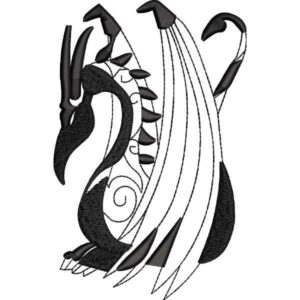


Learn how to digitize embroidery sustainably in 2025 with eco-friendly practices. Discover tips for sustainable embroidery digitizing success.
To digitize embroidery is to convert artwork into digital stitch files that guide embroidery machines to create designs on fabrics like cotton, polyester, or linen. In 2025, sustainability is a growing priority, pushing businesses and designers to adopt eco-friendly practices in the embroidery digitizing process. Sustainable digitizing minimizes waste, reduces energy use, and prioritizes environmentally friendly materials, benefiting both the planet and project outcomes. This blog explores how to digitize embroidery sustainably, covering techniques, materials, and best practices for eco-conscious embroidery in 2025.
By embracing sustainable methods, you can create high-quality designs while reducing environmental impact. Sustainable embroidery digitizing ensures professional results with a greener approach. Let’s dive into the steps and strategies for sustainable digitizing.
Sustainable digitizing involves several factors:
Eco-Friendly Materials: Using sustainable threads and fabrics.
Optimized Stitch Counts: Reducing thread and energy use.
Efficient Stitch Paths: Minimizing machine runtime and waste.
Digital Tools: Leveraging technology for waste-free previews.
Waste Reduction: Reusing files or recycling materials.
These elements ensure eco-friendly embroidery outcomes, critical for sustainable projects in 2025.
To digitize sustainably, focus on these:
Select Green Materials: Use organic or recycled threads and fabrics.
Optimize Stitches: Lower counts for efficiency and quality.
Plan Efficient Paths: Reduce machine runtime and thread trims.
Use Digital Previews: Minimize physical waste with simulations.
Recycle and Reuse: Repurpose old files or scraps.
Sustainable practices enhance eco-friendly results.
Sustainable digitizing offers several advantages:
Reduced Environmental Impact: Lowers thread, energy, and fabric waste.
Cost Savings: Optimized stitches and reused files reduce expenses.
Enhanced Brand Reputation: Appeals to eco-conscious clients.
High-Quality Results: Maintains clarity and durability with green materials.
These benefits make sustainable digitizing a smart choice for 2025, aligning with eco-friendly trends and client expectations.
Sustainable digitizing can face challenges:
Challenge: Higher Material Costs
Solution: Balance costs with bulk discounts or recycled materials.
Challenge: Limited Eco-Friendly Options
Solution: Source certified organic or recycled threads and fabrics.
Challenge: Learning Curve for Optimization
Solution: Use digital tools and tutorials for efficient digitizing.
Challenge: Maintaining Quality
Solution: Test designs to ensure eco-friendly materials meet standards.
Addressing these ensures sustainable, high-quality embroidery in 2025.
To address challenges, use these:
Negotiate Material Costs: Seek eco-friendly suppliers with fair pricing.
Source Green Materials: Find certified sustainable threads and fabrics.
Learn Optimization: Use online resources for eco-friendly techniques.
Test Rigorously: Verify quality with eco-materials.
Solutions ensure sustainable success.
Clear communication and prompt feedback streamline the process, ensuring sustainable outcomes. Collaboration is key for eco-friendly embroidery digitizing in 2025.
To collaborate sustainably, use these:
Submit Vector Files: Provide .SVG or .AI for precision.
Specify Green Materials: Request organic or recycled options.
Review Previews Promptly: Approve digital designs to save resources.
Test Eco-Samples: Confirm quality with sustainable fabrics.
Collaboration drives sustainable results.
Sustainable digitizing enhances:
Eco-Friendly Branding: Organic logos on uniforms or merchandise.
Sustainable Fashion: Green designs on apparel or accessories.
Promotional Items: Recycled patterns on bags or towels.
Personalized Gifts: Eco-conscious monograms on sustainable fabrics.
These applications align with 2025’s eco-friendly trends, appealing to environmentally conscious clients.
Choose Eco-Materials: Opt for organic threads and fabrics.
Optimize Stitch Count: Reduce thread and energy use.
Leverage Digital Tools: Use previews to minimize waste.
Reuse Files: Repurpose old stitch files for efficiency.
Collaborate with Experts: Partner with green-focused services.
These strategies ensure eco-friendly, high-quality embroidery.
To digitize embroidery sustainably in 2025, focus on eco-friendly materials, optimized stitch counts, efficient paths, technology, and recycling. These practices reduce waste, lower costs, and enhance brand reputation while maintaining design quality. By adopting sustainable embroidery digitizing, businesses and designers can create stunning, eco-conscious designs for branding, fashion, or gifts. Partner with a green-focused digitizing service.
Sustainable digitizing reduces waste, energy use, and environmental impact, aligning with eco-conscious trends.
Optimized stitch counts reduce thread and energy use, enhancing sustainability without sacrificing quality.
Organic cotton, recycled polyester threads, and biodegradable stabilizers minimize environmental impact.
3D previews, auto-density tools, and cloud collaboration reduce waste and optimize resources.
Provide vector artwork, specify eco-friendly materials, review previews promptly, and test sustainable samples.
